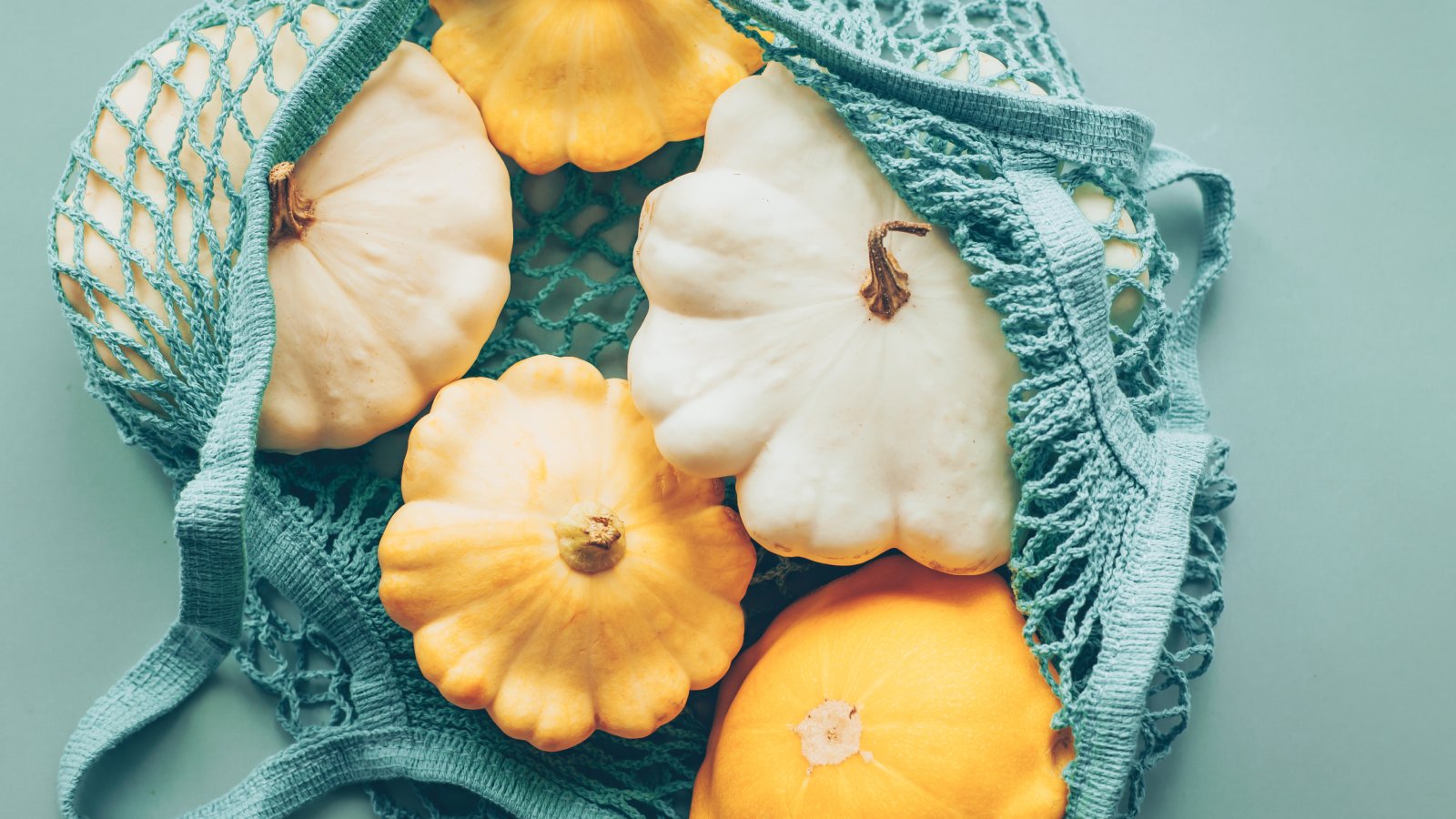Scallop Squash Growing Tips: Learn About Patty Pan Squash Plants

If you've been stuck in a squash rut, routinely cultivating zucchini or crooknecks, try growing patty pan squash. What is patty pan squash and how do you grow it?
Growing Patty Pan Squash Plants
With a delicate, mild flavor, much akin to zucchini, the patty pan squash, also referred to as the scallop squash, is a small variety of summer squash. Lesser known than its relatives, yellow squash or zucchini, patty pans have a distinct shape which some people describe as similar to a flying saucer. The fun shape of the fruit growing on patty pan squash plants may also be an enticement to getting the kids to eat their veggies. They can begin being eaten when only an inch or two (2.5-5 cm.) across, making them even more entertaining to kids' taste buds. In fact, scallop squash are not as moist as crooknecks or zucchini and should be harvested when young and tender. These little flying saucer shaped fruits may be white, green, or buttery yellow in color and are round and flat with a scalloped edge, hence the name.
How to Care For Scallop Squash
Scallop squash or patty pans should be grown in full sun, in rich, well-draining soil. Once the danger of frost has passed in your area, these little squash can be directly sown into the garden. They are usually planted in groups with two or three seeds per hill and spaced 2 to 3 feet (61-91 cm.) apart. Thin them to one or two plants per hill once the seedlings attain a height of 2 or 3 inches (5-8 cm.) tall. Give them plenty of room to grow like any squash; their vines spread 4 to 6 feet (1-2 m.). The fruit should mature between 49 and 54 days. Keep the squash watered well. There are no secret scallop squash growing tips; the plants are relatively easy to grow.
Scallop Squash Varieties
There are both open-pollinated, those pollinated via insects or wind, and hybrid varieties of scallop squash available. Hybrid varieties are bred to insure that the seeds have known specific traits while open-pollinated varieties are fertilized via an uncontrolled source, which may result in a plant that doesn't breed true. That said, there are some open pollinators that result in true plants from generation to generation and we call them heirloom varieties. The choice to grow heirloom or hybrid is yours. Here are some popular hybrid varieties:
- Sunburst
- Sunny Delight
- Peter Pan
- Scallopini
Winners amongst heirlooms include:
- White Patty Pan
- Early White Bush
- Yellow Bush
- Benning's Green Tint
- Wood's Earliest Prolific
When to Pick Patty Pan Squash
Plants are prolific and will produce several dozen squash each. Within days of flowering, it is very likely that you will have fruit that is sizeable enough to harvest. Pick once the color changes from green to golden yellow but while the fruit is still small, 2 to 4 inches (5-10 cm.). Patty pans can grow to 7 inches (18 cm.) across but get rather tough the larger they get. You can prepare patty pans just as you would any squash. They can be sliced, diced, braised, grilled, fried, roasted, or stuffed. Steam small ones whole for four to six minutes. Scallop squash even make edible, useful serving bowls. Just scoop out the center while either raw or cooked and fill with whatever your heart desires.
Gardening tips, videos, info and more delivered right to your inbox!
Sign up for the Gardening Know How newsletter today and receive a free copy of our e-book "How to Grow Delicious Tomatoes".

Amy Grant has been gardening for 30 years and writing for 15. A professional chef and caterer, Amy's area of expertise is culinary gardening.
-
 Looking For Plants To Give You The Soft And Fuzzies? Try These 5 Fuzzy Leaf Plant Options
Looking For Plants To Give You The Soft And Fuzzies? Try These 5 Fuzzy Leaf Plant OptionsLovers of texture, drama, silver foliage and tactile plants will adore these special sensory garden additions. These fuzzy leaf plant options will leave you all aglow
By Susan Albert
-
 Get Ready For A Summer Of Hummers! Grow These Full Sun Hummingbird Plants and Flowers
Get Ready For A Summer Of Hummers! Grow These Full Sun Hummingbird Plants and FlowersIf you’re lucky enough to enjoy a sunny backyard, make sure you are maxing out on your pollinator opportunities and grow these full sun hummingbird plants and flowers
By Tonya Barnett